Forget Customers. Focus on Value
NOTES FROM THE UNMUTE 2021 STAGE FT. CHRIS WILLIS
It’s a provocative statement, but great content marketing shouldn't be built to sell your product. Sounds crazy.
But really, great content marketing should be built to answer questions, bring awareness to a problem and its solutions, and provide value.
By eliminating a sales pitch, and in essence, forgetting about your target prospect for a moment, you can build content that can help a much wider audience find your company, identify with a common problem, and be smarter for reading it.
At UNMUTE 2021, Chris Willis, CMO of Acrolinx takes us through what makes content stand out and how great content can open doors for you and make you and your company successful.
Chris is a theatre artist, cross-fit coach, diet and nutrition coach, a marketer, a copywriter, a content specialist and the list just does not seem to end.
Hear it straight from the horse’s mouth below.
Breaking Existing Constructs Around Content
From a content creation standpoint, we believe or at least we want to believe that our customers want to know about us, right?
So they want to understand what our product does, how we build it, where the value is, how to use it. And we love making this type of content because it makes us feel connected to everything that we do. We're the domain experts, right? We tell our story better than anybody else ever could.
But here's the thing. That's not really the case.
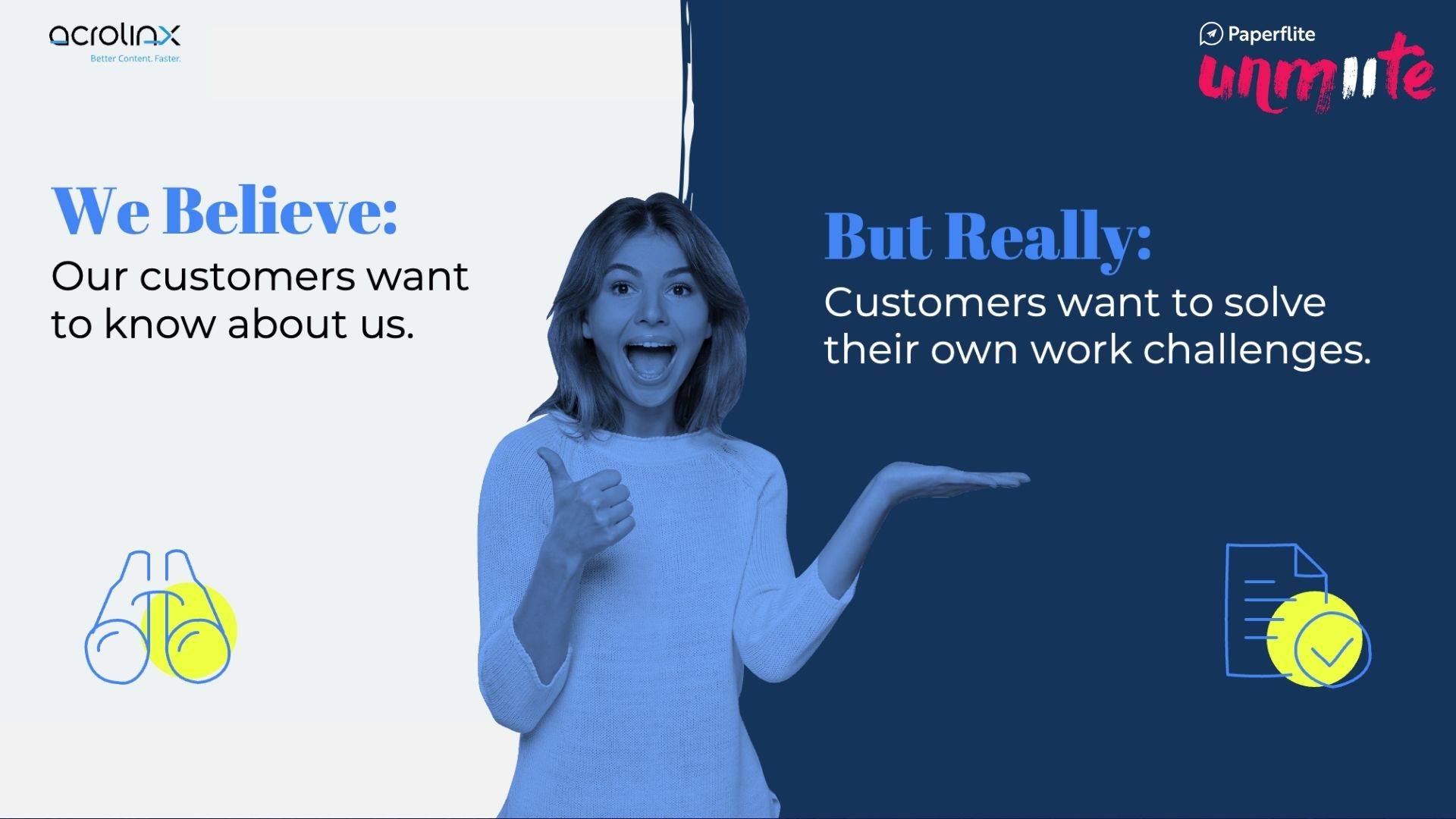
It's not really what our audiences are looking for. Because as much as you're a content creator, out there in the world, you're also a content consumer, and you should know better, right?
As a content consumer, what do you really care about?
Well, for me, I care about finding other people's content that makes it easier for me to do my job.
So you're looking for content that solves your challenges. And getting product information for the sake of product information doesn't solve your challenge. It just doesn't.
Provocative Statements and Great Content Marketing Elements
And so that provocative statement of the day is you're just not that interesting.

But that's what we're going to talk about today. There's nothing more boring than business-to-business product-centric marketing content. It might be useful, it might be necessary. But boy, it's really boring.
And nobody out there is specifically looking for that. That’s not an answer to a question in nature, it's an answer to a question in your sales cycle. But it's not something that somebody's searching for.
So what I want to talk about is outstanding content that separates you from the pack that helps you fight above your weight, it helps you build awareness and excitement, and engagement that otherwise wouldn't be possible for your company.
Because that’s where I think content marketing can make the biggest difference in the world.
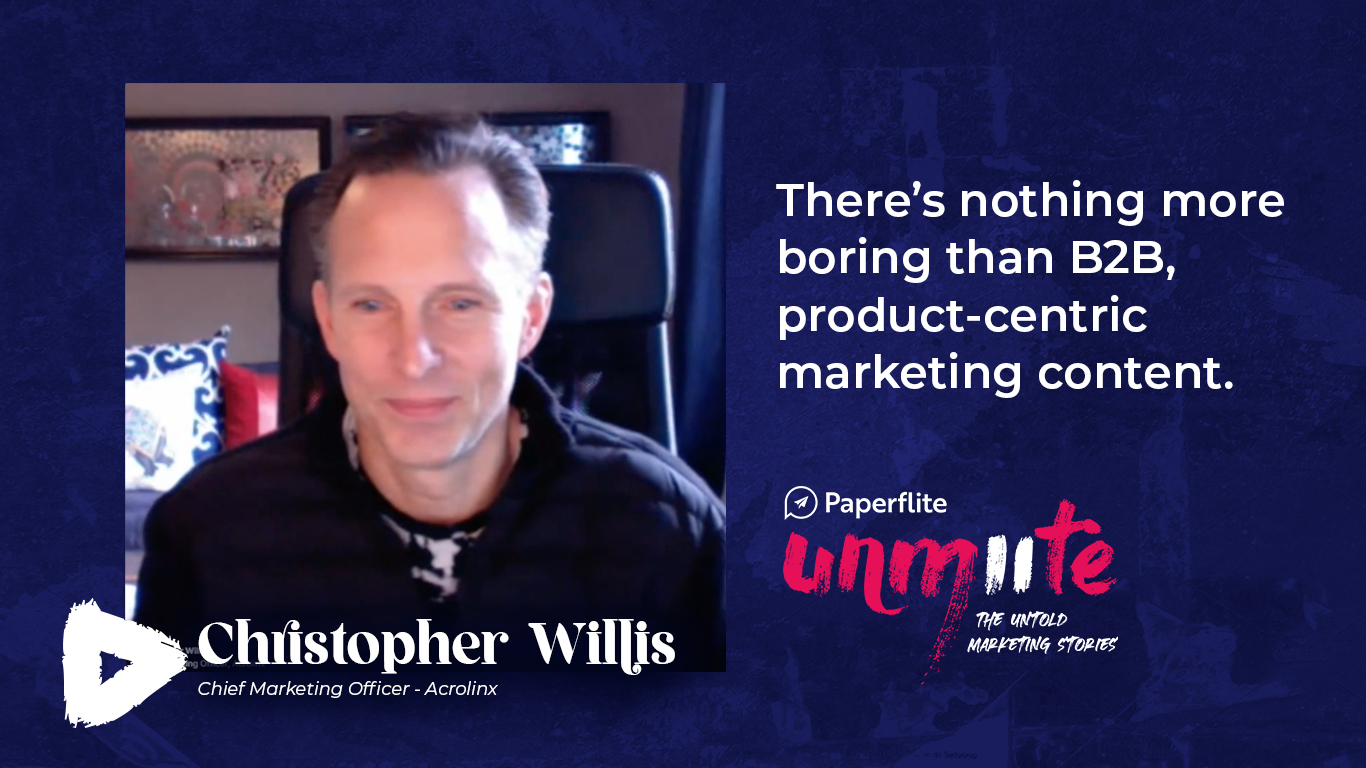
So I did some research on what people consider to be great content marketing. And before I say anything further, I'm going to apologize for this. But this is award-winning content.
This is a Microsoft microsite, it's Microsoft by the numbers. It's a collection of visual statistics about Microsoft IT, its products, its services, its people, products, offerings. Everything that Microsoft does, it's a really neat piece of content.
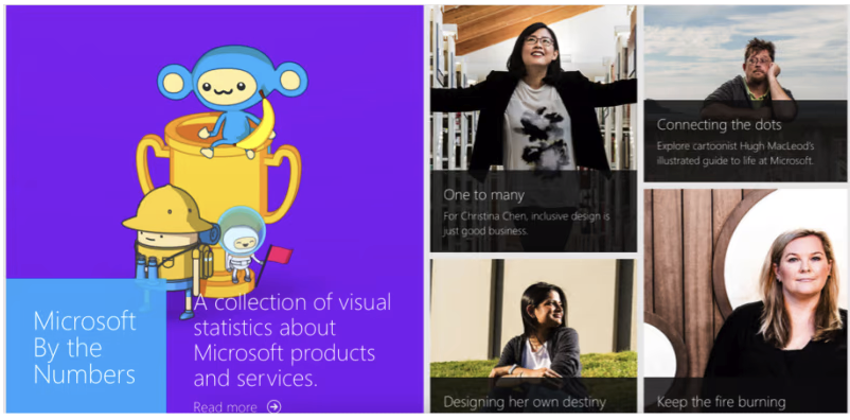
And I'm not gonna say this is bad. It's not. I'm just saying that while award-winning, and by the book and content marketing 101, this isn't going to change the trajectory of Microsoft's business.
This is not the piece of content that's going to drive them to the next level. And I love you, Microsoft, I'm sorry for using you as an example. You're amazing. But this was just what I learned when I was out doing some research for what wins awards.
Because, here's the thing: B2B content marketing that talks about your company, or your products is ONLY useful to people that know you, care about your business and want to know more. So if you're Microsoft, this makes a lot of sense.
But a lot of us aren't Microsoft.
Throwing Award-Winning Playbooks Out of the Window
Today, we're going to take a very personal journey back through my career, starting back in the 90s, looking at specific occasions where we threw out this award-winning content marketing playbook, to create content that changed the businesses I worked at dramatically. For the better.
So let's head back to 1996, shall we?
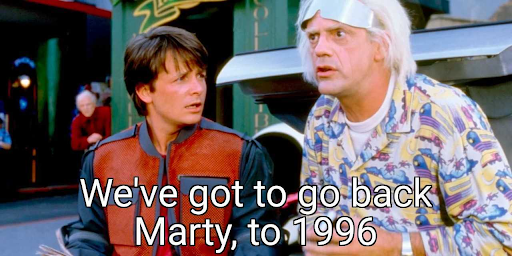
Back in ‘96, I worked at a little company called Cambridge Technology Group. It's an executive education provider that doubled as a startup incubator on the MIT campus in Cambridge. This was the early days of desktop internet, it was the company at which I saw a browser for the first time.
And we had a message about the development of enterprise applications to add efficiency and operational excellence to large enterprises.
But being a small company, who's listening? Who’s going to hear that? How are we going to get the word out? And the answer as it turned out, long story short, is content.
We wrote a book called The Second Industrial Revolution, rebuilding your business on the internet.
What we were writing was an implementation strategy for reinventing your business with internet technology. It's a book that discusses the formulation of correct business strategies for that day in 1996-97.
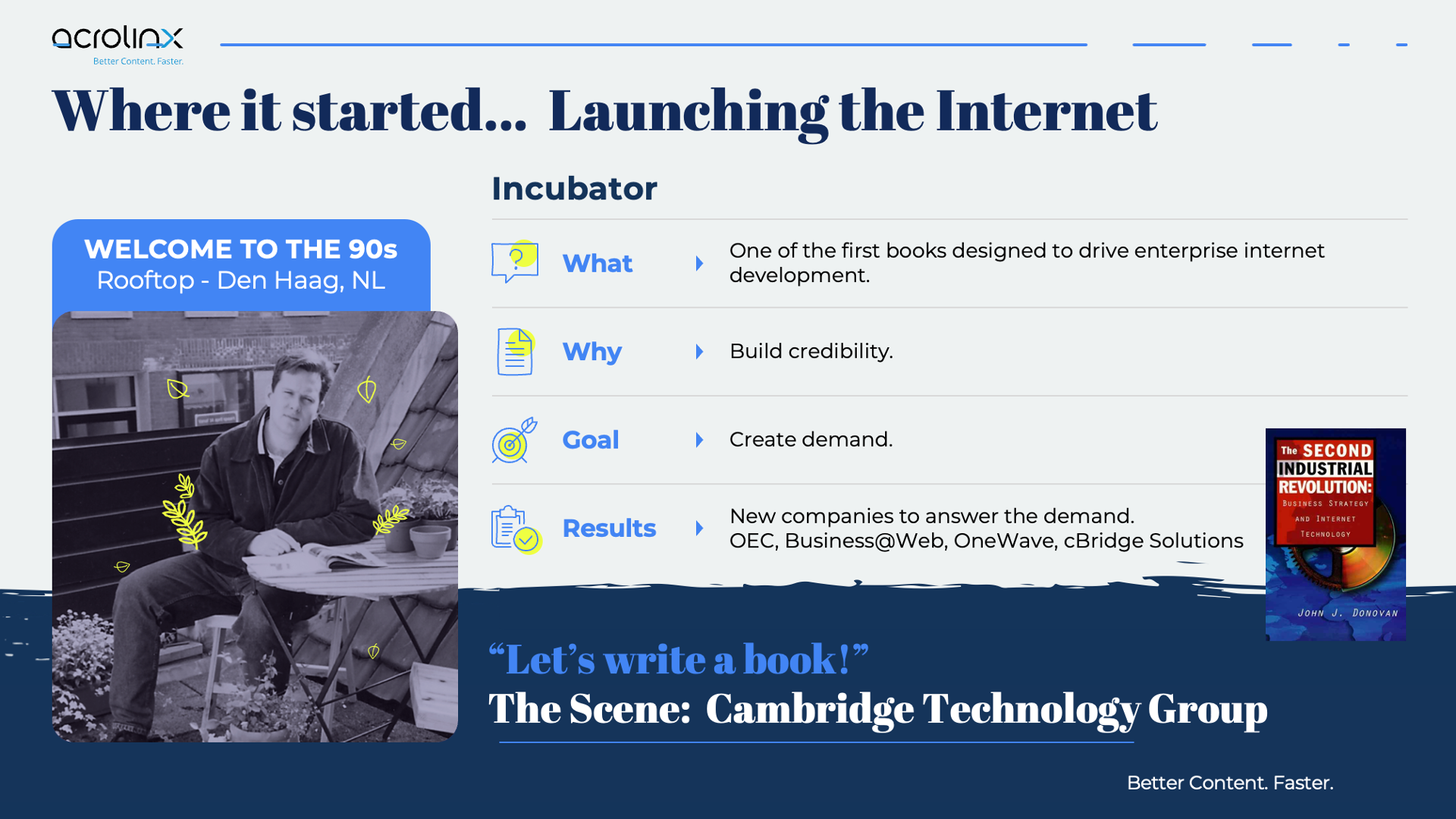
And why did we do that?
Well, because, we were a small executive education company in Cambridge. Our goal with this book was to position Cambridge Technology Group as the premier thought leader in this space, and drive business.
So we spoke to executive leaders from some of the biggest companies in the world. We needed an asset that would jump off of executive leaders’ (who we were marketing to) desk, make them take notice, spark the imagination of the folks that come to our classes, and who would then go out and talk to the world and make this seem bigger.
As a result of this experiment, this book sold 1000s of copies. We increased seminar attendees, and we increased inbound leads by 85%.
It was a great result for a piece of content marketing at a tiny little company. Again, if we had just done a product brief on our executive seminars and talked about, you know, how we educate folks, that would have been an interesting content marketing piece, it would have been an expectable content marketing piece.
But a book wasn't expected. It wasn't asked for it. Nobody was waiting for it. It was something that we put out into the world that drove a big change for us as a business.
2002: A Content Marketing Odyssey
The 529 College Savings investment vehicle was starting to hit its stride. This is a financial instrument that you invest pre-tax money into to save for your children's college educations.
This is sort of the early days of online transactions, and Pyxis Consulting, the company that I worked for at the time, was involved in the implementations of software products for financial services companies. And we saw this process of online enrollment as a market opportunity for us.
And, again, as a small company with 20 people and a minuscule marketing budget, we took a different approach.
What we did was create a lot of fear and concern, we worked with the individual state treasurer's offices to develop a national score sheet for their plan managers and online enrollment processes, and took this small part of a big product, and let people know they were doing it wrong.
We pitched this ebook to the media and not to our customers. And now there were articles in major FinTech publications, talking about a failure to deliver on online enrollment across the biggest investment management companies in the world.
And you can imagine what happened next. The states complained to their plan managers, and the plan managers called us inbound. And all of a sudden, our little 20 person company that wrote this e-book were the world's leading experts at 529 Technology.
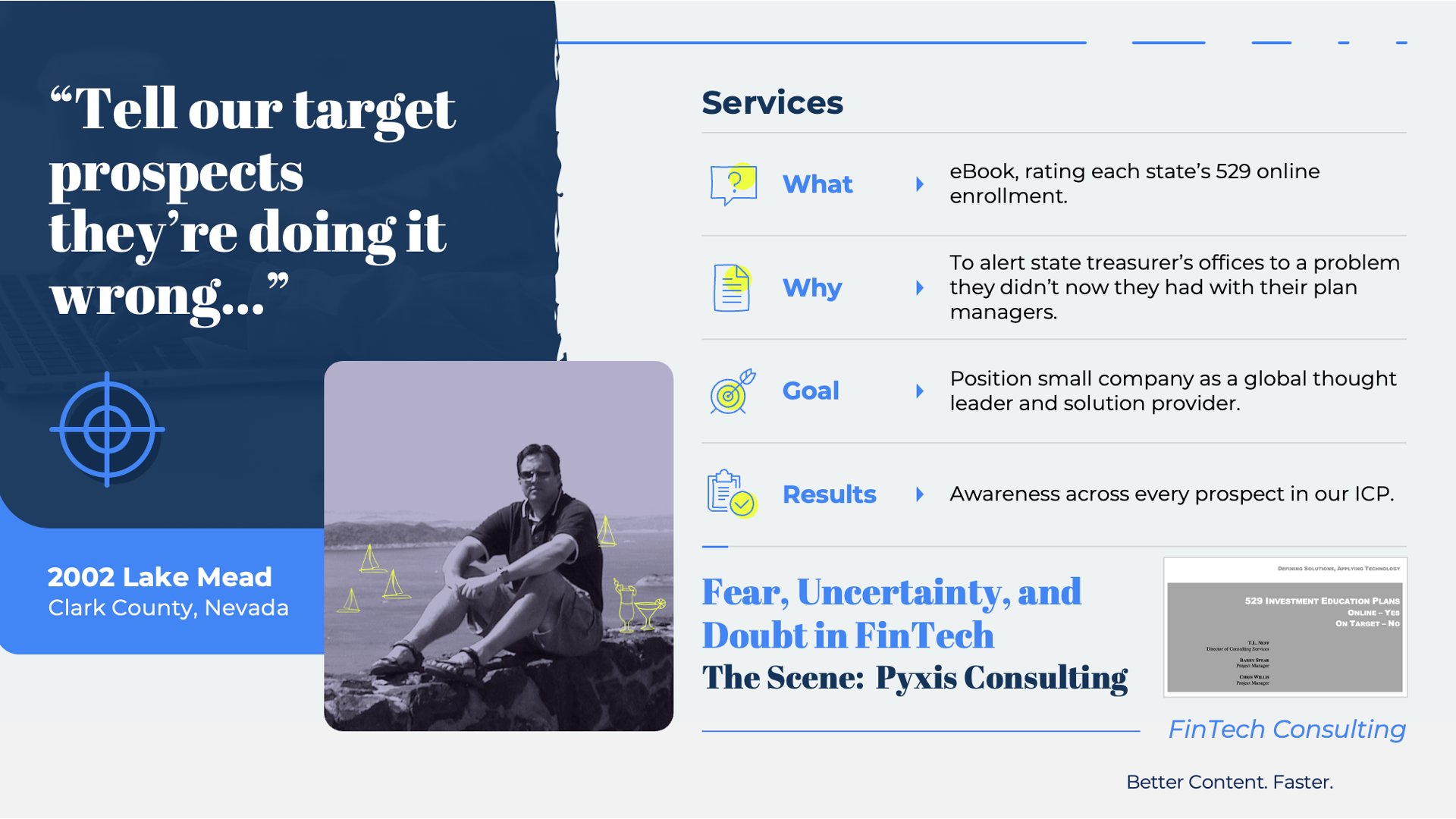
This one piece of content that wasn't about us or our product, but just about a process and a rating system not only put us on the map but put us in boardrooms that we should never have been able to get access to.
Back to the Future
Let's jump forward a couple of years. So we fast forward to roughly the 2010-2011 timeframe. And at that time, we had transitioned into a mobile application development platform.
So we started this company, the first packaged mobile application company that turned into the first cross-platform application development platform. And if we ever wanted to gain traction, we needed to teach enterprise app developers that there was such a thing.
Developers then were trying to build individual code bases for each of the platforms they support. And we knew there was a better way. But we couldn’t get the attention of the world of mobile app developers.
So we picked a persona from the app developer space; enterprise architects. And we essentially defined the vision for enterprise mobility, defined the requirements to deliver applications to cross-platform audiences, and a blueprint to modernize that process. This became the owner mobility book that you see in front of you.
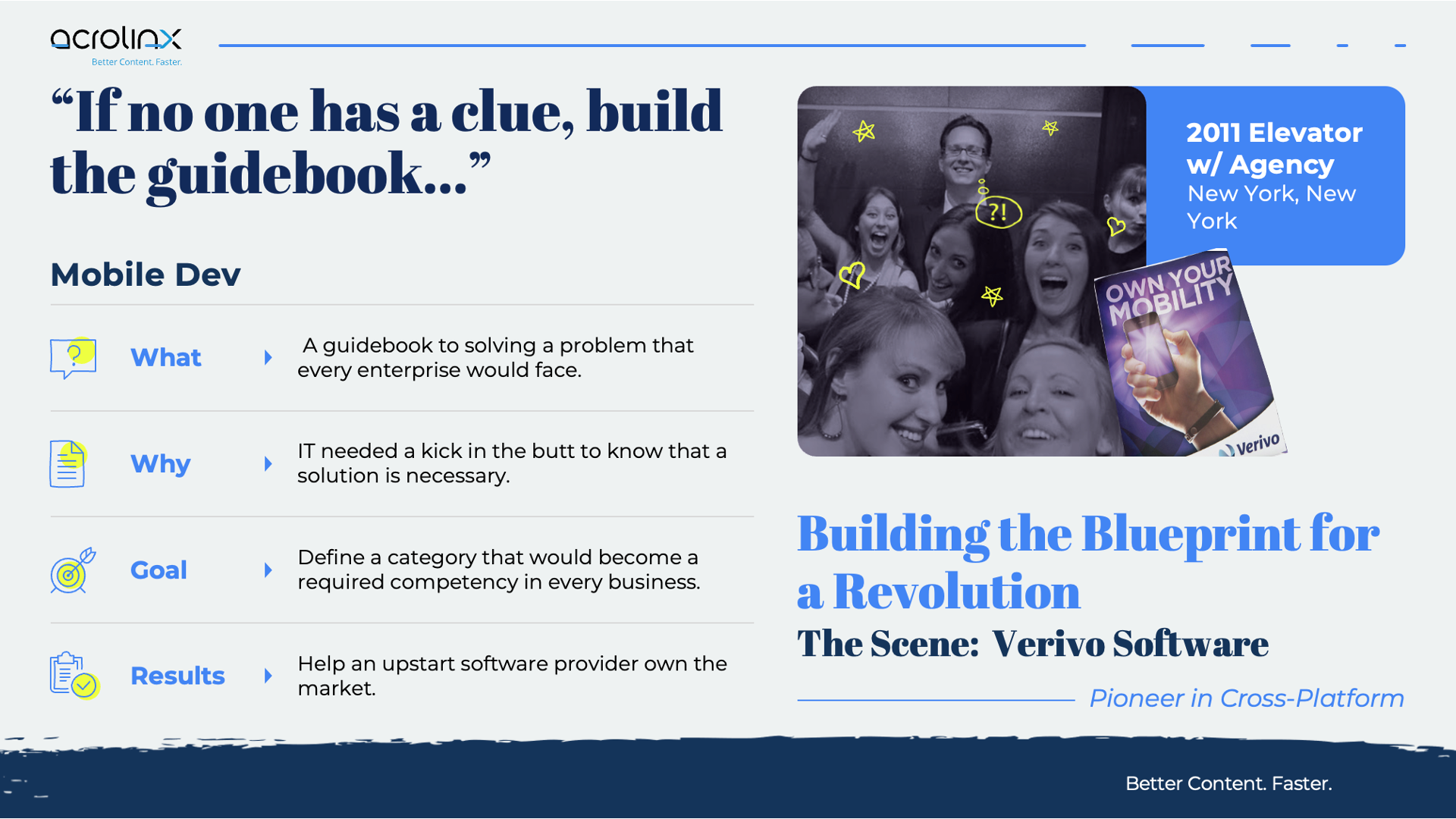
So again, this isn't about us or our product, this is about a space. This is about defining a category technology area, exposing that and driving it out in the marketplace.
What happened when we did this? Well, beyond just expanding our awareness, this content piece aided in moving us up into the right on Gartner's Magic Quadrant for mobile enterprise application platforms by effectively defining the space correctly.
By defining and putting the framework in place, we positioned ourselves as a leader in that space.
So one piece of content sets the agenda that opens up a marketplace for not just us, but companies just like us.
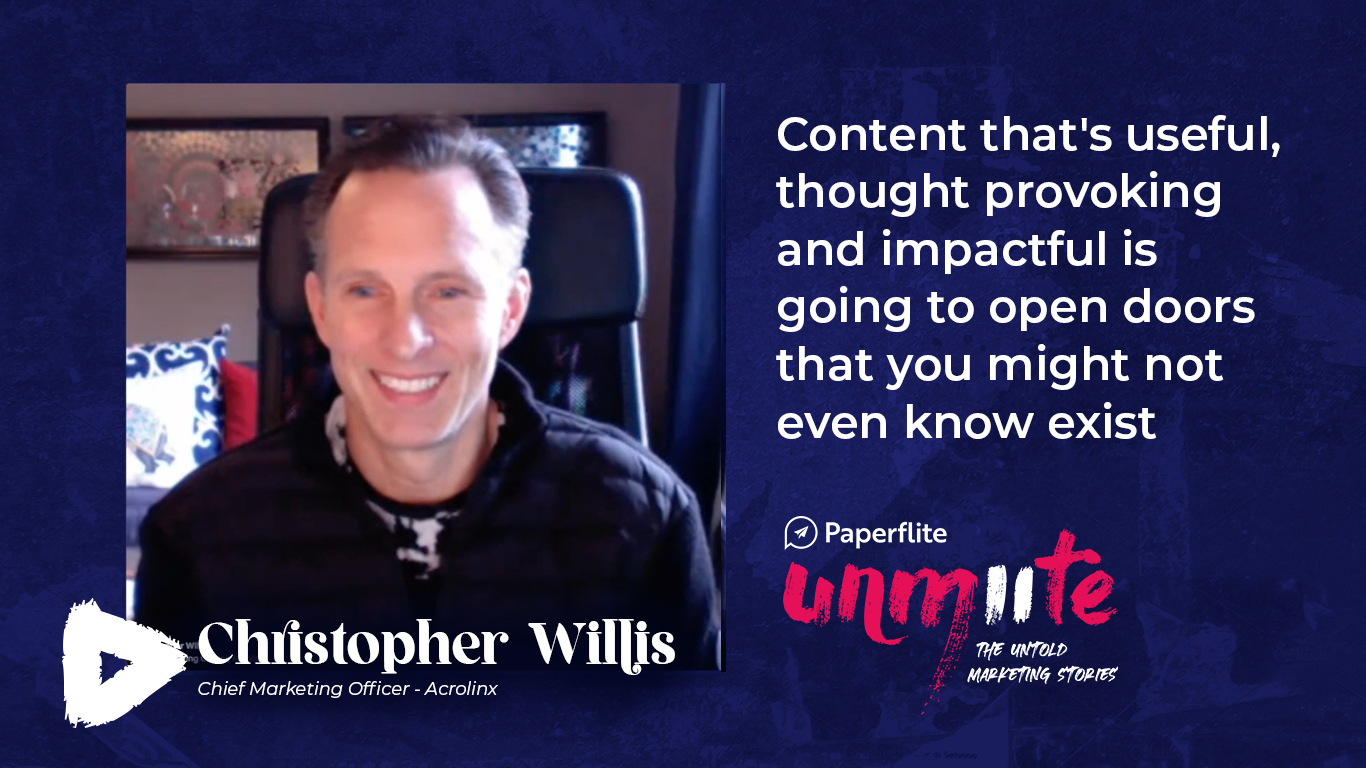
It's not about what we do. It's about what you need, the problem you're trying to solve.
If we're part of a solution. That's super cool. If you never use us, that's also fine. Because you're getting the value of a piece of content that's helping you to understand more.
Here’s something we did back in 2016 when I was working for Perfecto Mobile. You might notice that I look slightly more fit here. This is three years into my fitness journey. And in this photo, I was just back from a vacation in Iceland.
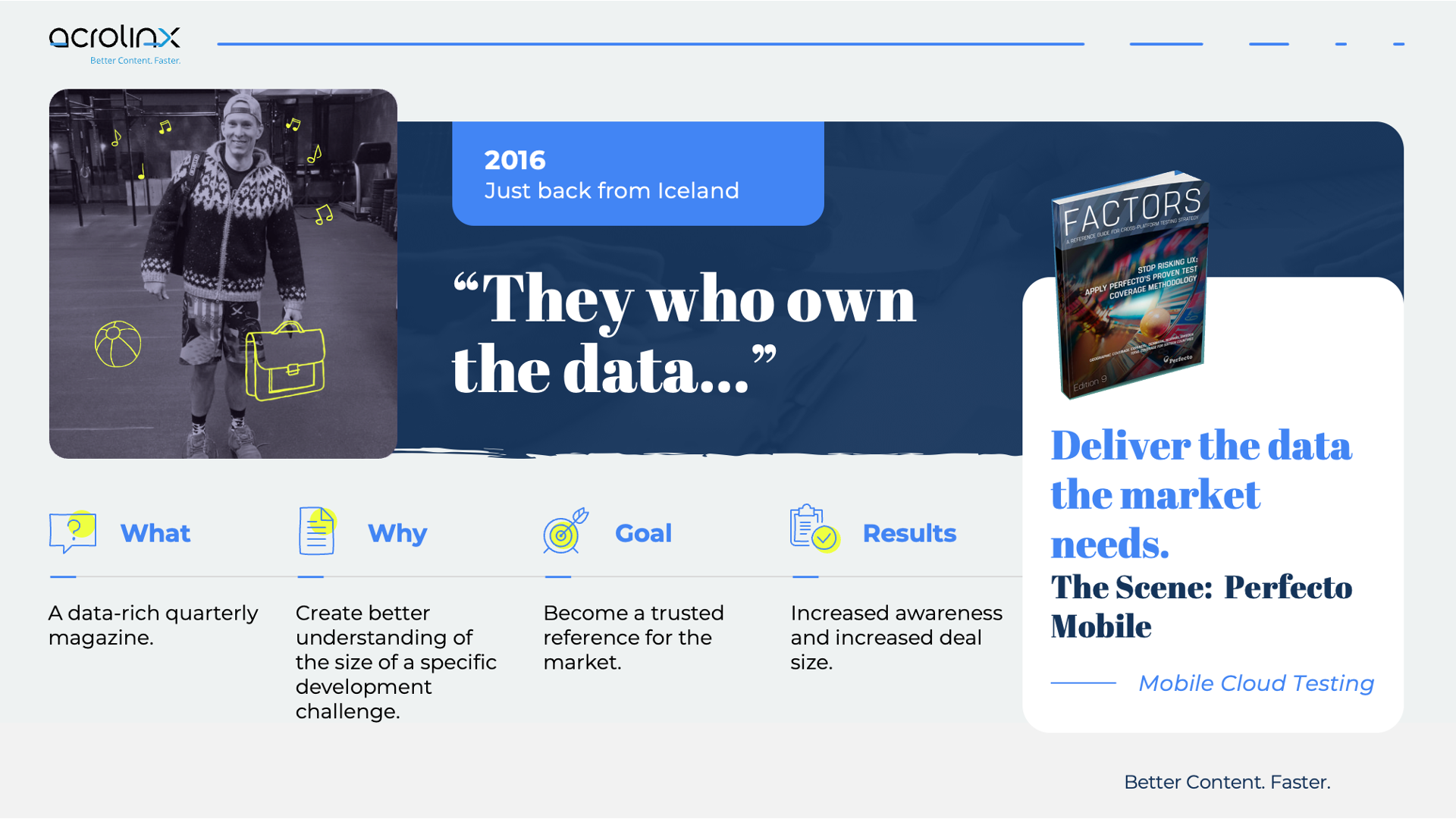
The big issue, again, was that people didn't know what mobile cloud testing was. So rather than create content to talk about us in our cool lab, we created content to help understand the issue. So we created an asset that the entire enterprise app creation ecosystem looked forward to. This became the Bible on how you structured your testing model.
In Summary
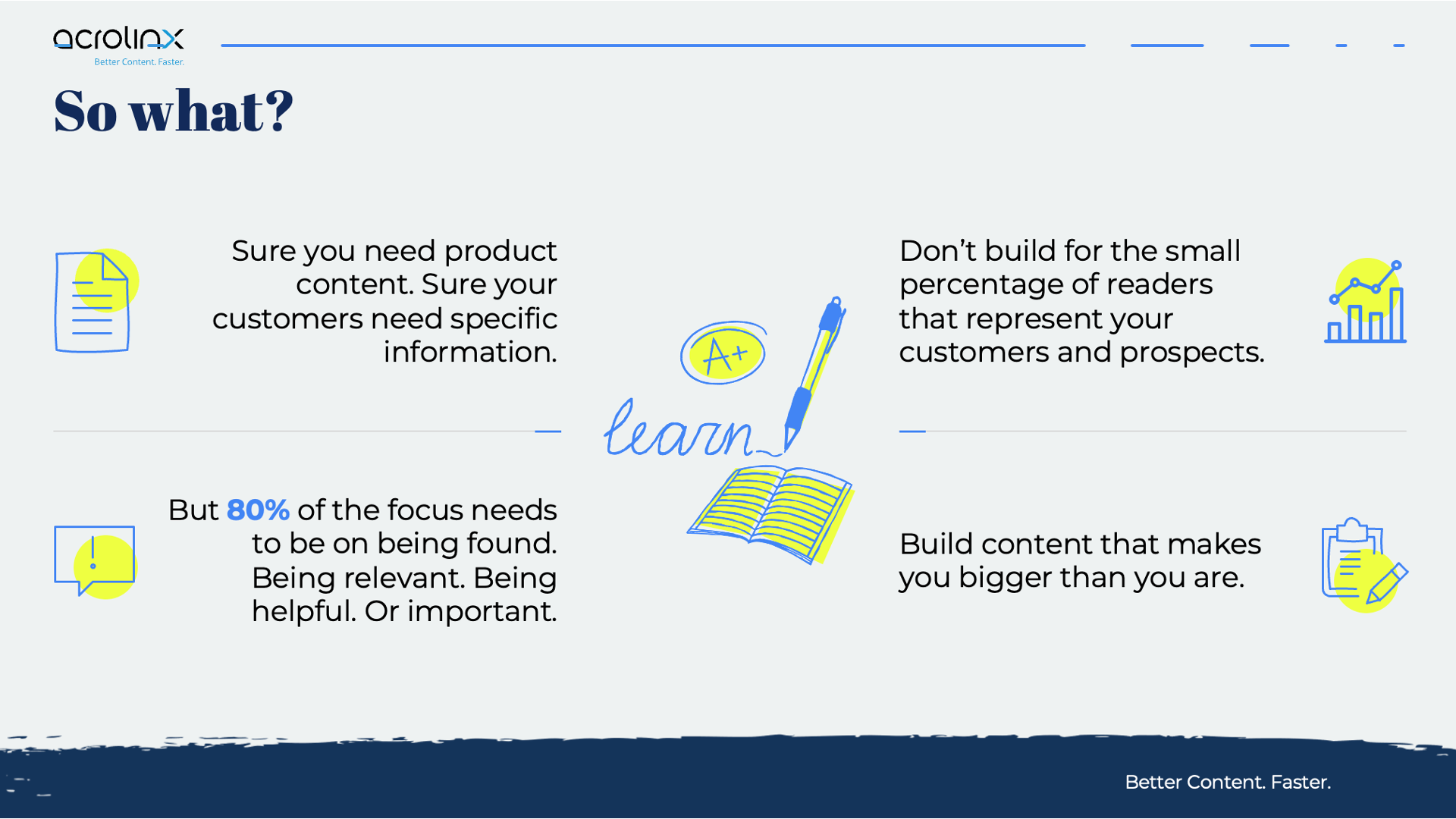
Closing Notes
Look, I'm not saying that every piece of content marketing needs to be an out-of-the-box masterclass on selling actionable content. And I hope I'm not giving the impression that that's all I've ever done. We rolled out hundreds of product pieces in the last few years, they're necessary, even if they're not that interesting.
But great content goes beyond your customer need. You have to create that. It's going to solve problems, it's going to help people be better at their jobs, and it's going to improve your business.
Other Notes from UNMUTE 2021
